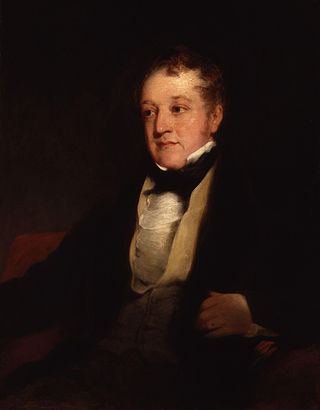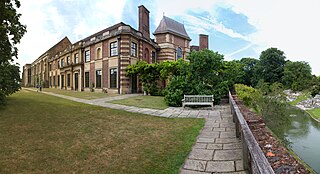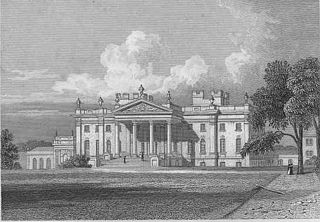The Master-General of the Ordnance (MGO) was a very senior British military position from 1415 to 2013 with some changes to the name, usually held by a serving general. The Master-General of the Ordnance was responsible for all British artillery, engineers, fortifications, military supplies, transport, field hospitals and much else, and was not subordinate to the commander-in chief of the British military. In March 2013 the holder was titled as "Director Land Capability and Transformation", but still sat on the Army Board as Master-General of the Ordnance; in September 2013 the post was eliminated.

The Commissioners of Woods, Forests and Land Revenues were established in the United Kingdom in 1810 by merging the former offices of Surveyor General of Woods, Forests, Parks, and Chases and Surveyor General of the Land Revenues of the Crown into a three-man commission. The name of the commission was changed in 1832 to the Commissioners of Woods, Forests, Land Revenues, Works and Buildings.
The Crown Estate is a collection of lands and holdings in the United Kingdom belonging to the British monarch as a corporation sole, making it "the sovereign's public estate", which is neither government property nor part of the monarch's private estate. The Crown Estate in England, Wales, and Northern Ireland is managed by the Crown Estate Commissioners, which trades as The Crown Estate. In Scotland, the Crown Estate is managed by Crown Estate Scotland, since the Scottish estate was devolved in 2017.

A royal forest, occasionally known as a kingswood, is an area of land with different definitions in England, Wales, Scotland and Ireland. The term forest in the ordinary modern understanding refers to an area of wooded land; however, the original medieval sense was closer to the modern idea of a "preserve" – i.e. land legally set aside for specific purposes such as royal hunting – with less emphasis on its composition. There are also differing and contextual interpretations in Continental Europe derived from the Carolingian and Merovingian legal systems.

The Lord Warden of the Marches was an office in the governments of Scotland and England. The holders were responsible for the security of the border between the two nations, and often took part in military action. They were also responsible, along with Conservators of the Truce, for administering the special type of border law known as March law.

The Court of Wards and Liveries was a court established during the reign of Henry VIII in England. Its purpose was to administer a system of feudal dues; but as well as the revenue collection, the court was also responsible for wardship and livery issues.
The post of Surveyor General of the Land Revenues of the Crown was an office under the English Crown, charged with the management of Crown lands. In 1810, by the Crown Lands Act 1810, later amended by the Crown Lands Act 1829, the functions of the post were merged with those of the Surveyor General of Woods, Forests, Parks, and Chases and became the responsibility of a new body, the Commissioners of Woods, Forests and Land Revenues.
The Commissioners of Woods, Forests and Land Revenues were officials under the United Kingdom Crown, charged with the management of Crown lands. Their office were customarily known as the Office of Woods.
The Commissioners of Crown Lands were charged with the management of United Kingdom Crown lands. From 1924 to 1954, they discharged the functions previously carried out by the Commissioners of Woods, Forests and Land Revenues. There were three commissioners at any one time: the Minister of Agriculture, the Secretary of State for Scotland and one permanent commissioner.
Events from the year 1810 in the United Kingdom.

Sir William Douglas of Glenbervie, Knt. was a Scottish nobleman, who fell at Flodden.

The Hon. George Villiers was a British courtier and politician from the Villiers family. The youngest son of the diplomat Lord Hyde, he was an intimate of Princess Amelia and personal supporter of her father, George III. His favour within the Royal Family and his father's influence brought him a number of sinecures to support him. However, Villiers was more interested in the operation of the royal farms at Windsor Castle than in politics or the duties of his offices. When his bookkeeping as Paymaster of the Marines was carefully examined in 1810, Villiers' carelessness and the speculation of his clerk had left him in debt to the Crown by more than £250,000. This exposure touched off a public scandal; Villiers promptly surrendered all his property to the Crown and threw himself on the king's mercy. The misconduct of Joseph Hunt as Treasurer of the Ordnance to some extent obscured Villiers' own misconduct, and he was able to retain other sinecures and a stable, if reduced, income from them until his death in 1827.

Sylvester Douglas, 1st Baron Glenbervie, PC, KC, FRS, FRSE, FSA was a British lawyer and politician. He was Chief Secretary for Ireland between 1793 and 1794.

Sir John Shaw, 1st Baronet of Eltham Lodge, Kent was an English merchant and politician who sat in the House of Commons from 1661 to 1679.

Woodleigh is a village, parish and former manor located in the South Hams region of the county of Devon, England. In 2011 the parish had a population of 171.
The 1903 Birthday Honours were announced on 9 November 1903, to celebrate the birthday of King Edward VII that day. The list included appointments to various orders and honours of the United Kingdom and the British Empire.
Before the Act of Union 1707, the barons of the constabulary of Haddington elected commissioners to represent them in the unicameral Parliament of Scotland and in the Convention of Estates. The number of commissioners was increased from two to four in 1690.
Events from the year 1832 in Scotland.

Thomas Duncombe was a British politician who sat in the House of Commons between 1751 and 1779.









